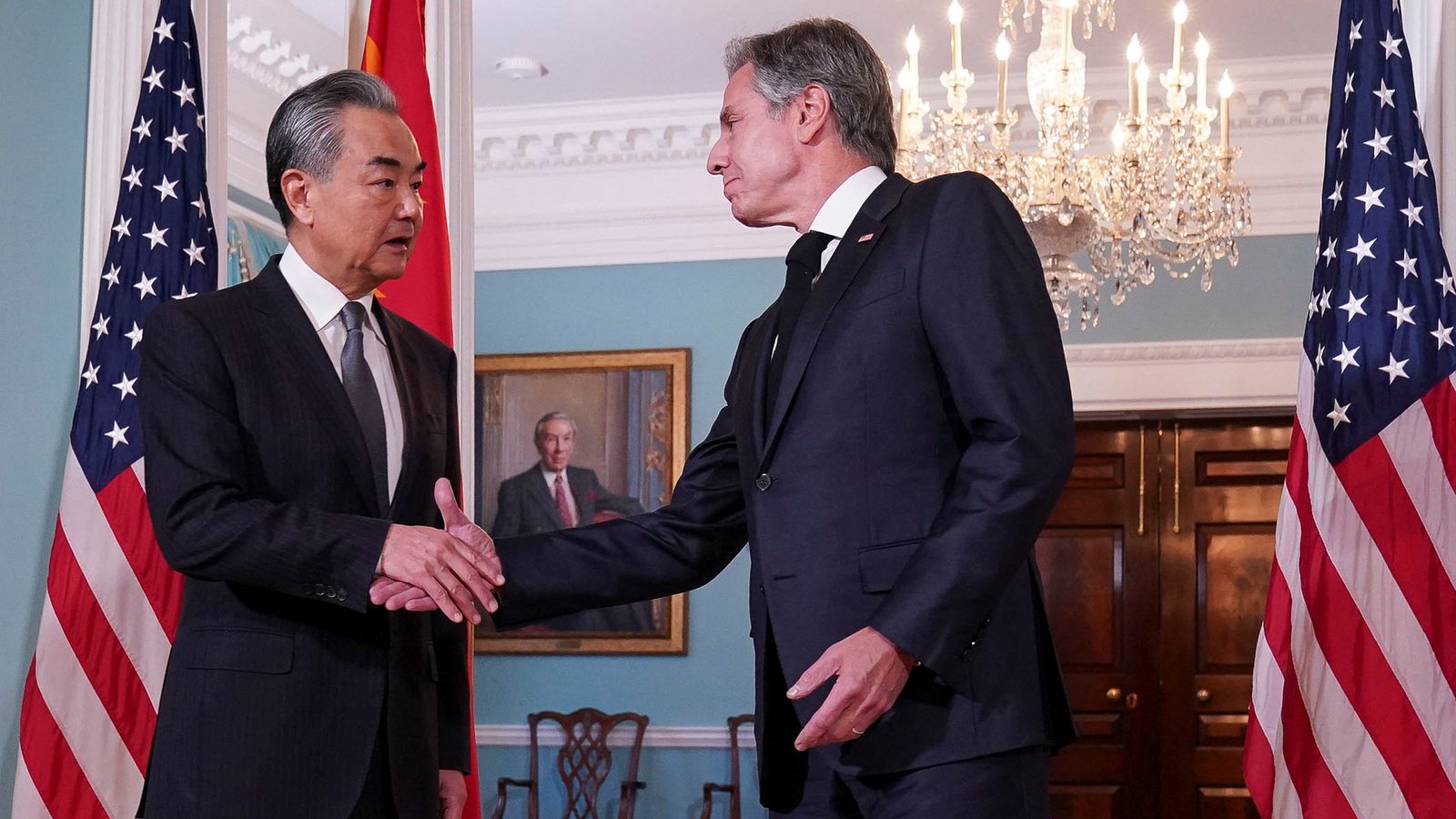There is likely to be a relative amount of cautious optimism from both the US and Chinese camps regarding the efforts to try and stabilise their relations.
It feels that Chinese foreign minister Wang Yi’s visit to Washington, where he has met with US Secretary of State Antony Blinken, has got off to a reasonably good start.
The talking points were predictable, the fact that they have “differences” and disagreements” but also a responsibility to manage these constructively, but they have been delivered in an atmosphere that feels a little less fraught than it did just a few months ago.
The fact that the two emerged to the waiting cameras in lockstep together, and delivered some live opening remarks is notable; such co-ordination simply wouldn’t have felt possible earlier this year. The body language and gestures too all felt a smidge more relaxed and warm than when Blinken visited Beijing in June.
The key hope is that this visit will pave the way for President Xi to travel to the APEC summit in San Francisco next month and meet President Biden while he is there.
Add to the picture a raft of meetings between officials at various levels in recent months and it all feels like there is a real and active commitment on both sides to what’s being called “tactical stabilisation”.
However, while hope is justifiably high that a meeting of presidents will go ahead and that any major deterioration has paused for now, expectations of any major breakthrough are low.
There is simply too much that still divides them and there are so many fronts on which any progress could very easily be blown off course.
For example, tensions are still extremely high in areas around the South China Sea and the Taiwan strait. Both militaries have upped the number of videos they are releasing of what’s being called “unprofessional” and “unsafe” interactions between jets and ships in these areas.
Just on Wednesday the US Air Force released a video of a Chinese jet flying within 10 feet of a US fighter. China in turn released its own video of what it described as unsafe encounters caused by US navy vessels.
The US has also recently voiced its support for the Philippines in its increasing tense standoff with China in contested parts of the South China Sea. Chinese and Philippines vessels actually collided last week and Biden went as far as saying the US would come to the defence of the Philippines if necessary.
Read more
China sends warships and jets near Taiwan as top US official visits Beijing
Chinese foreign minister warns ‘reckless’ US risks ‘catastrophic’ conflict
Please use Chrome browser for a more accessible video player
Then, of course, there’s the Israel-Hamas war. China and the US have taken different approaches to that conflict, with the US firmly supporting Israel and China more subtly leaning towards the Palestinian cause. This week they vetoed each other’s resolutions at the UN security council.
It is likely that both sides are pretty clear-eyed about all this, but it’s very possible they are seizing the opportunity to appear collegiate while they can.
It will become much harder next year when the US election cycle gets under way and the campaign narrative will inevitably turn extremely anti-China. Taiwan’s election in January is also likely to be a flashpoint of tension.
Both are aware that while things are calmer there are domestic advantages to be gained from these photocalls.
Certainly in China, at a time where the economy is still struggling and relations with many countries are so strained, President Xi will want to be seen to be able to manage this most important of relationships.
Whether that means either side will take a more optimistic view of the other in the medium term is unlikely.








